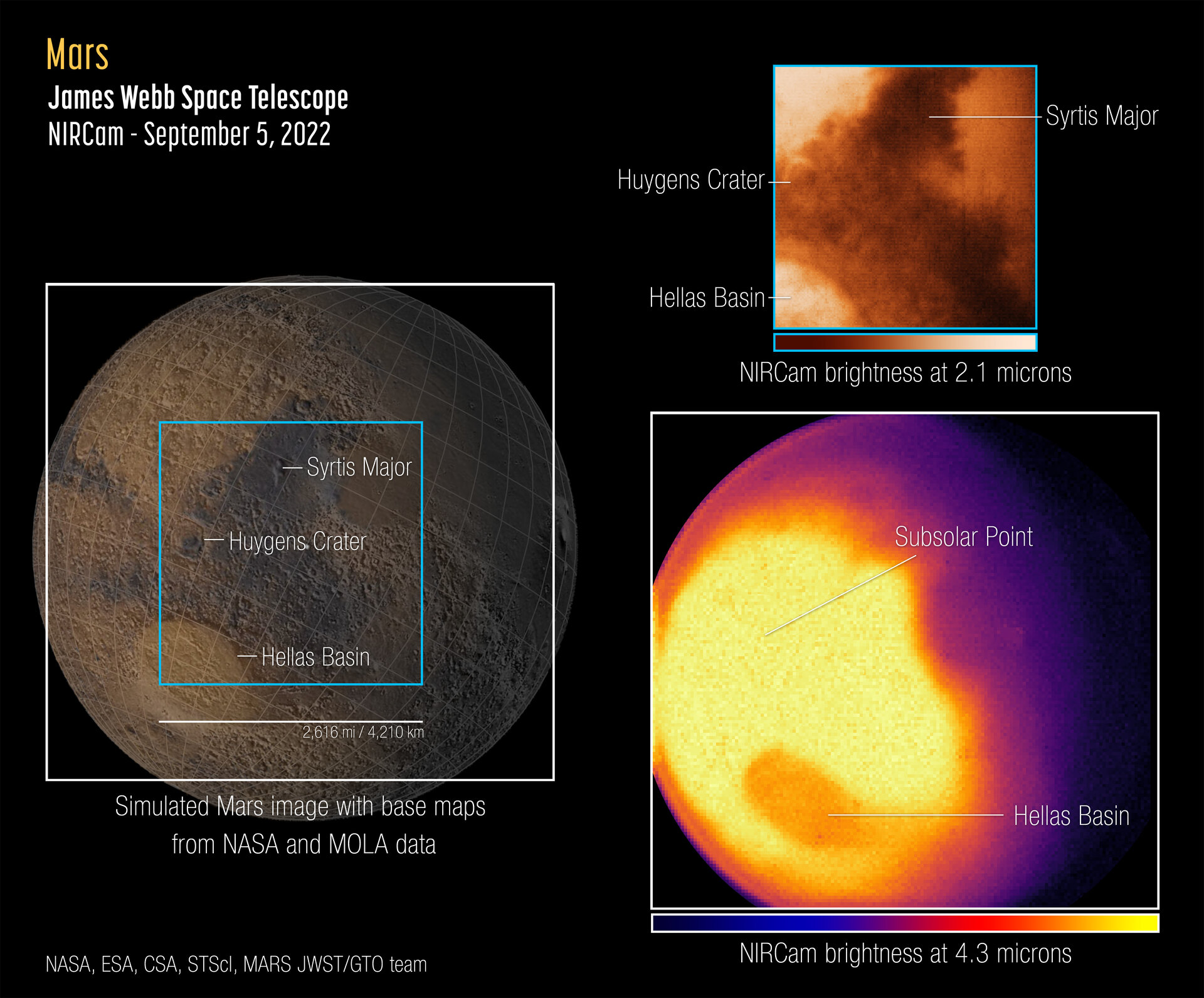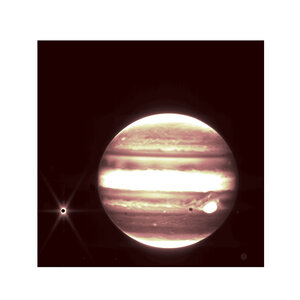

First Webb observations of Mars
Webb’s first images of Mars, captured by the Near-Infrared Camera (NIRCam), show a region of the planet’s eastern hemisphere at two different wavelengths, or colours of infrared light. This image shows a surface reference map from NASA and the Mars Orbiter Laser Altimeter (MOLA) on the left, with the two Webb NIRCam instrument field of views overlaid. The near-infrared images from Webb are shown on the right.
The NIRCam shorter-wavelength (2.1 microns) image [top right] is dominated by reflected sunlight, and thus reveals surface details similar to those apparent in visible-light images [left]. The rings of the Huygens Crater, the dark volcanic rock of Syrtis Major, and brightening in the Hellas Basin are all apparent in this image.
The NIRCam longer-wavelength (4.3 microns) image [lower right] shows thermal emission – light given off by the planet as it loses heat. The brightness of 4.3-micron light is related to the temperature of the surface and the atmosphere. The brightest region on the planet is where the Sun is nearly overhead, because it is generally warmest. The brightness decreases toward the polar regions, which receive less sunlight, and less light is emitted from the cooler northern hemisphere, which is experiencing winter at this time of year.
However, temperature is not the only factor affecting the amount of 4.3-micron light reaching Webb with this filter. As light emitted by the planet passes through Mars’ atmosphere, some gets absorbed by carbon dioxide (CO2) molecules. The Hellas Basin – which is the largest well-preserved impact structure on Mars, spanning more than 2,000 kilometres – appears darker than the surroundings because of this effect.
In the future, Webb will be using this imaging and spectroscopic data to explore regional differences across the planet, and to search for trace species in the atmosphere, including methane and hydrogen chloride.





